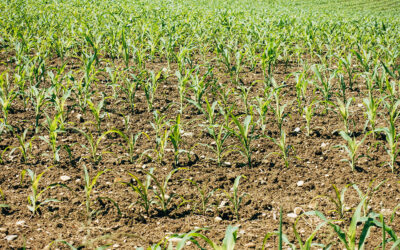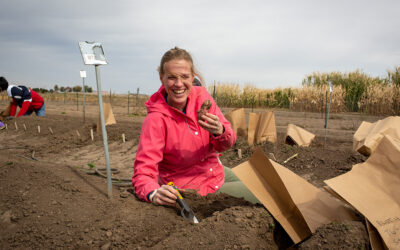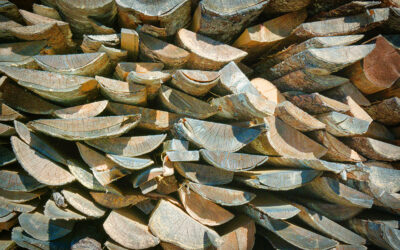A river’s shape and form—for example how much it meanders, how steep it is, and its width and depth—is usually described as a balance between the energy of the water and the resisting forces of the sediment (e.g., sand, gravel, boulders). However, it is also fairly common for various types of plants and animals to substantially alter physical flow characteristics and shape a river’s form and function. Organisms that directly or indirectly create physical changes in rivers and cause positive feedbacks are known as ecosystem engineers.
Ecosystem engineering is by definition an interdisciplinary concept, tying together geomorphology (the study of physical processes and forms in rivers) and ecology. Two researchers at Umeå University in Sweden that bridge these disciplines, a fluvial geomorphologist, Dr. Lina Polvi, and a landscape ecologist, Dr. Judith Sarneel, examined the available literature and summarized the range of ecosystem engineers that are found in river environments in their review recently published in WIREs Water.
Plants, including macrophytes, woody plants, and algal mats and biofilms, engineer the river environment through stabilizing sediment in streambanks and reducing flow velocities. Among animals that engineer, the classic example is the beaver, which build dams, causing substantial changes to river dynamics. In addition, net-spinning macroinvertebrates and mussels can stabilize sediment and reduce velocities, and aquatic and riparian grazers modulate the effect of plants.
An important aspect of this work was to determine where various ecosystem engineers have the most impact, in terms of three geomorphic factors—channel width, sediment size and the relative stability of the channel. For example, rivers affected by beaver dams can become more complex and change from being single-thread meandering channels to more complex multi-thread systems. However, although the beaver can be found throughout a river system from very narrow to very wide channels, they will only engineer by building dams and truly alter the river’s form in narrow- to intermediate-sized channels.
Likewise, plants that grow alongside or in a river (riparian plants and macrophytes) can be found in all river types, but they will only engineer and alter the river planform (the river form as seen from above) in narrow to intermediate channel widths and in fairly dynamic sand- to gravel-bed rivers. In general, ecosystem engineers are able to have the largest effect when geomorphic processes in rivers occur at a temporal scale that matches plants’ life cycles or alterations by animals. For example, riparian plants can engineer a river by stabilizing the streambank and slowing down flow velocities during flooding. If the geomorphic processes (e.g., erosion, bank collapse) are too strong then the plants will not be able to survive, but if there is no sediment transport or few high-magnitude flows then the plants cannot change the dynamics because there is very little to alter.
Dr. Polvi and Dr. Sarneel point to the study of ecosystem engineers being an expanding field that is gaining importance, in particular with the need to understand the impacts of invasive species and river restoration. Beaver are already being used to restore rivers in some parts of the world, and the authors detected the potential to use other ecosystem engineers to holistically restore river function and ecosystems. However, they caution against using non-native species, as many invasive species have been so successful due to their engineering capabilities. Looking forward, they see potential to look back in time in terms of how ecosystem engineering has affected species evolution and the evolution of river types. Dr. Polvi and Dr. Sarneel also encourage other researchers to zoom in and zoom out to examine the potential effects of ecosystem engineers on very small spatial scales and determine how they may affect biodiversity on very large scales.
Kindly contributed by Lina Polvi and Judith Sarneel.
















